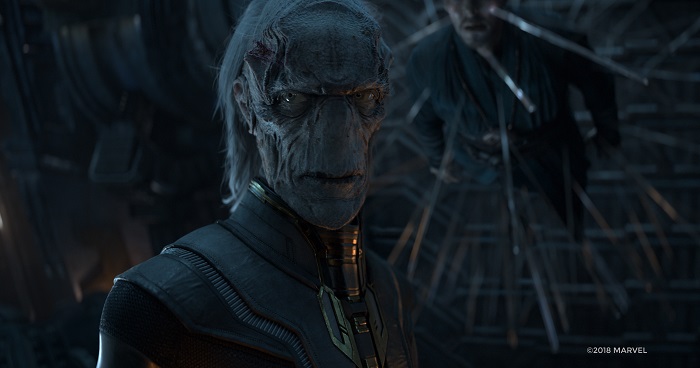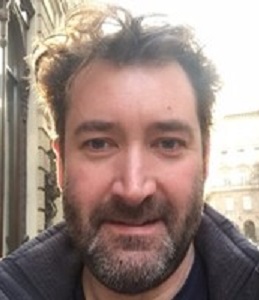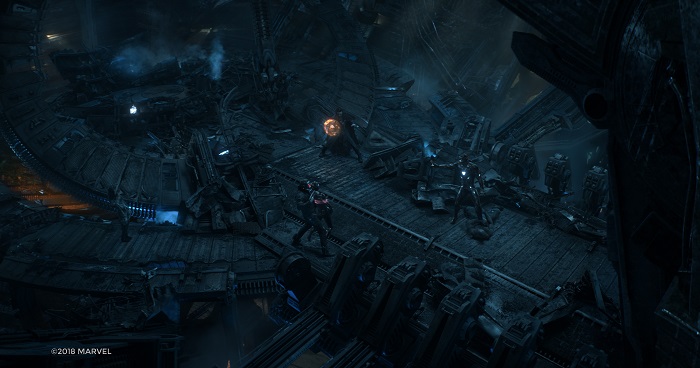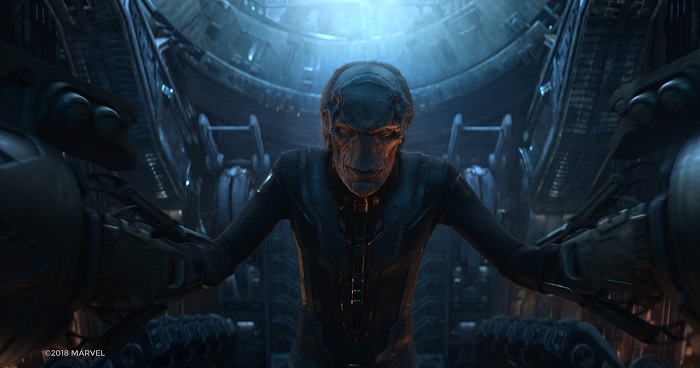
Avengers: Infinity War was one nerve-jangling affair! And the Russo brothers, the directors, waste no time to establish the diabolical narrative in the opening sequence, that begins with a massive ship invading the Asgardians.
Soon, we overhear some chilling words from a shadowy figure walking over a horde of corpse, before revealing himself to be the sinister general of the ‘black order’, Ebony Maw.
A skilfull manipulator with a shrewd tongue, the Maw was dispatched to procure the time stone from Doctor Strange. Even if the character received the least screen-time among all the four vicious lieutenants of Thanos, he certainly was petrifying and had the sorcerer supreme by his throat. “We received Ebony Maw artwork and a high-res digital sculpt, from which the team rebuilt the character to suit our pipeline,” explains Cinesite’s Andy Morley, who supervised the VFX delivered from the Vancouver studio.

Unlike in the comics, the Maw we saw on screen was more wrinkled and also more terrifying in appearance. That certainly involved plenty of detailing. “It had to be an animation-friendly character so we designed the model and rig to be able to accept all the facial capture gathered on the shoot. Whilst also taking care to visually match it with reference to other facilities, as well as shots from other vendors.
“Tom Vaughan-Lawlor wore a full head camera (duel cam/ head camera) on set, which allowed us to capture his performance using the facial capture technology. Tom is around 5ft 9 and Maw was 7ft 2; so we played around a lot with his stride length and proportions to get them to sit right. Tom’s strong performance was our guide as to how the character moved, we stayed as true to his performance as possible. Still, doing a full-screen Ebony Maw was quite the challenge. His head literally fills the whole screen in some cases so there’s nowhere to hide! We had to throw everything we had at it, to do the character justice and achieve these hero shots,” he further added.
Having delivered 215 VFX shots all sequences combined, right from character animation to fully CG shots, Cinesite began work in March last year after Morley and matchmove lead Arron Turnbull visited the set on three occasions to understand the filming and gather reference material required for their scenes. With a team of around 143 artists at the peak of the production, the work concluded finally in April this year.
But Cinesite aren’t unbeknownst to Marvel and its VFX. “Cinesite has a long history of working for Marvel Studios. To date we have worked on Iron Man 3, Ant-Man, Captain America: Civil War, and now Infinity War. Our Montreal crew has just delivered Ant-Man & The Wasp, so the team were confident in our ability to deliver the quality and style the Russo brothers were striving for in this film.”
One of the more eye-catching aspects of the movie’s beginning, is the massive Q-ship by which Maw and Cull Obsidian reach earth. Cinesite is also credited for the scenes taking place inside it. “The design of the flight deck came from the art department. They built the main walkway area physically on stage in Atlanta, it was a highly detailed but small section of set. The style, design and texture allowed us to res up the low resolution previs geometry we were given, to create the full CG version,” Morley elucidates about the dark interiors of the ship.

“Initially we approached the massive CG interior set extension with conceptual artwork provided by Charlie Wood’s team and the Marvel art department. We also got geometry that had been used in the previs. There were instances where we replaced sections of the live action built set with full CG geometry mainly because it was more efficient to replace it in its entirety, or a more damaged version of the flight deck was required to sync with the progression of the fight sequence. During this process, we built the Q-ship interior in a modular way to accommodate any changes that might be made.
“The nodule screen was a key element to the overall flight deck interior design. It was a highly conceptual fluid motion based “screen” designed to show the environment outside of the Q-ship. Finessing this level of detail was highly time consuming and challenging. It required a heavy Houdini set up which went through various stages of lighting and extreme compositing set up to tie the design together.”

But amongst all the scenes the studios worked in, including the face-off between Guardians of the Galaxy and the Avengers, designing the Maw was perhaps the most challenging according to Morley. “He’s a very reserved but powerful character which is a challenging combination to visually represent. Due to our Maw shots, often being seen in extreme close up a lot of work went into his subtle facial movements and the subsequent texture and lighting that coincides with this these finer details.”
But between the jigs and the reels, working for a Marvel movie has to be plenty of fun. And Morley endorses the same. “It was a great show to supervise, particularly because myself and the team were able to bring some key comic book moments in to life on the big screen such as Ebony Maw’s torture of Doctor Strange. Being part of the MCU production family was a great experience, everyone had so much ambition and knowledge when it came to the VFX, which is clear to see in the film.”

